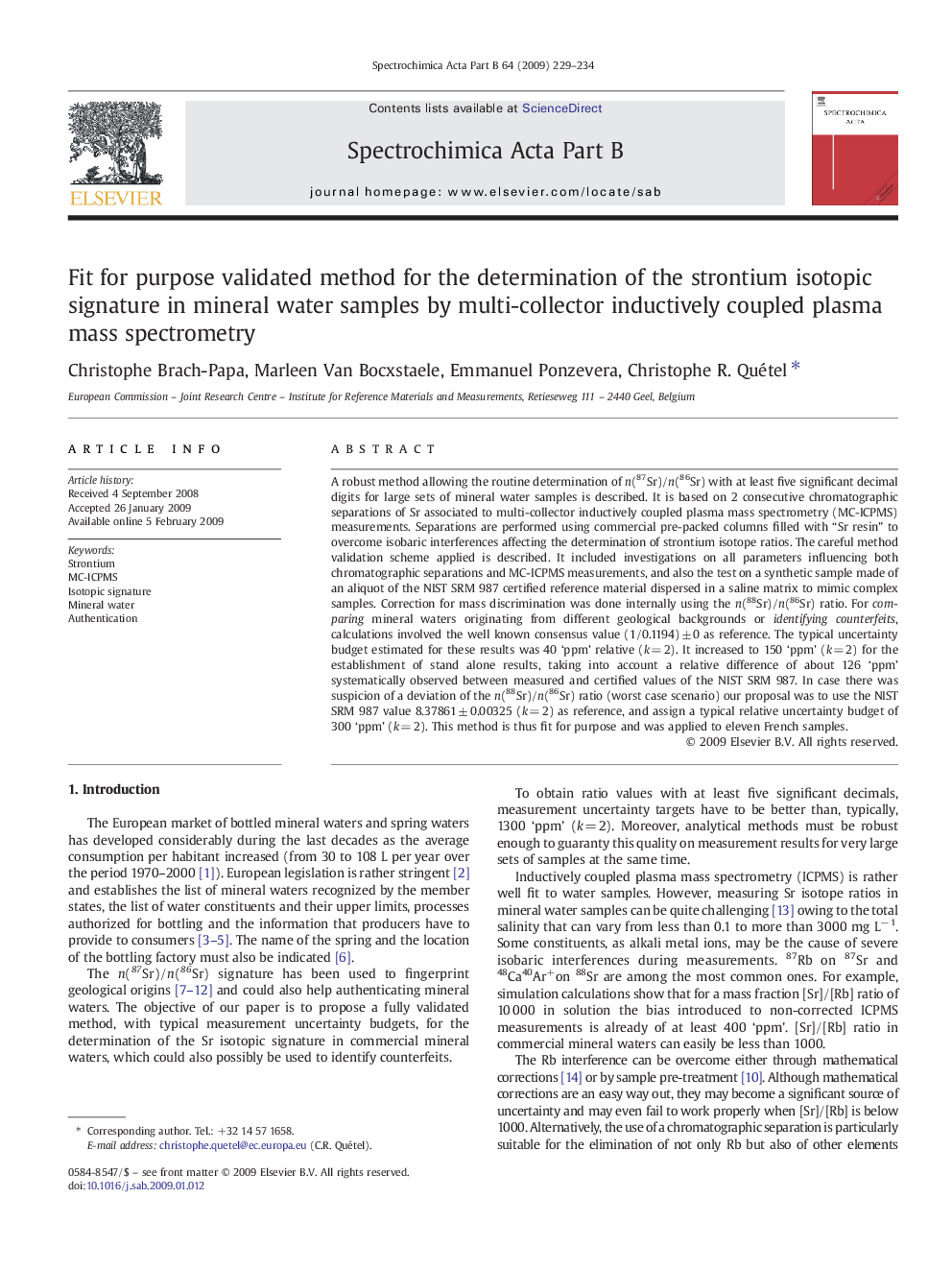| Article ID | Journal | Published Year | Pages | File Type |
|---|---|---|---|---|
| 1240474 | Spectrochimica Acta Part B: Atomic Spectroscopy | 2009 | 6 Pages |
A robust method allowing the routine determination of n(87Sr)/n(86Sr) with at least five significant decimal digits for large sets of mineral water samples is described. It is based on 2 consecutive chromatographic separations of Sr associated to multi-collector inductively coupled plasma mass spectrometry (MC-ICPMS) measurements. Separations are performed using commercial pre-packed columns filled with “Sr resin” to overcome isobaric interferences affecting the determination of strontium isotope ratios. The careful method validation scheme applied is described. It included investigations on all parameters influencing both chromatographic separations and MC-ICPMS measurements, and also the test on a synthetic sample made of an aliquot of the NIST SRM 987 certified reference material dispersed in a saline matrix to mimic complex samples. Correction for mass discrimination was done internally using the n(88Sr)/n(86Sr) ratio. For comparing mineral waters originating from different geological backgrounds or identifying counterfeits, calculations involved the well known consensus value (1/0.1194) ± 0 as reference. The typical uncertainty budget estimated for these results was 40 ‘ppm’ relative (k = 2). It increased to 150 ‘ppm’ (k = 2) for the establishment of stand alone results, taking into account a relative difference of about 126 ‘ppm’ systematically observed between measured and certified values of the NIST SRM 987. In case there was suspicion of a deviation of the n(88Sr)/n(86Sr) ratio (worst case scenario) our proposal was to use the NIST SRM 987 value 8.37861 ± 0.00325 (k = 2) as reference, and assign a typical relative uncertainty budget of 300 ‘ppm’ (k = 2). This method is thus fit for purpose and was applied to eleven French samples.
